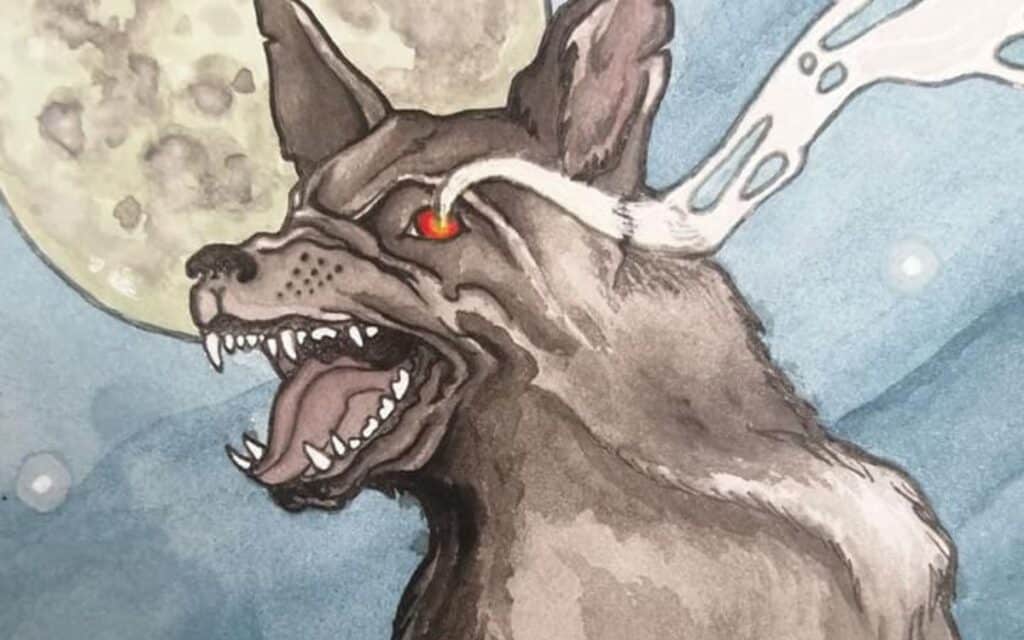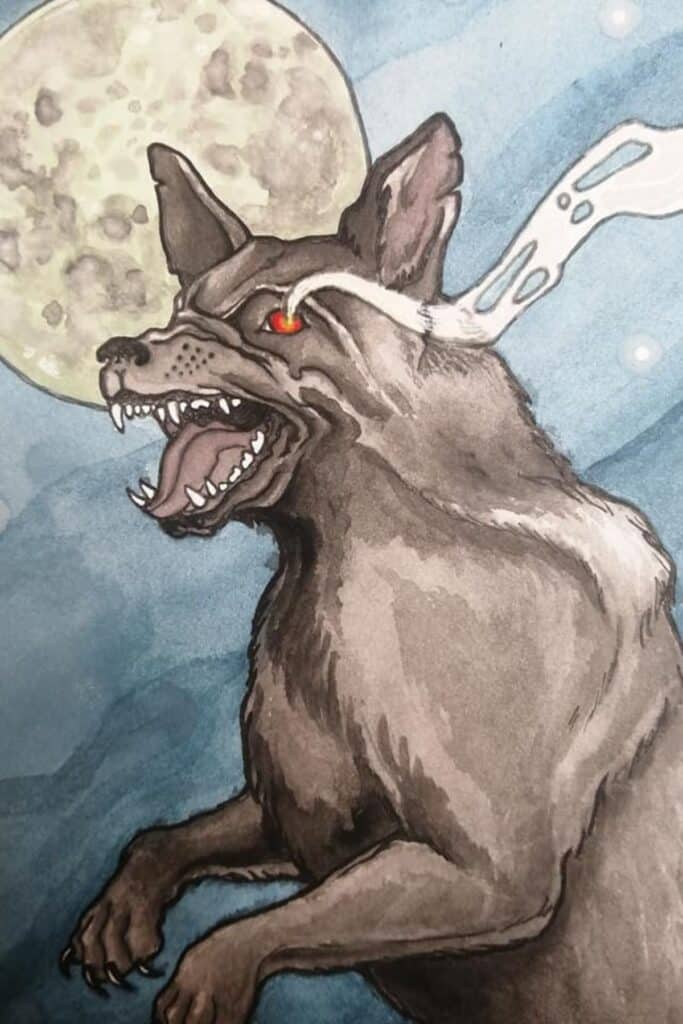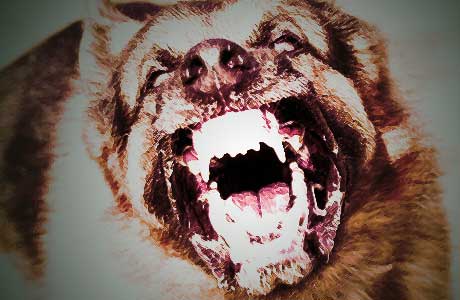Not all Hounds of Hell are the same. HELEN JR BRUCE reveals regional variations in England’s infamous supernatural Black Dogs!

The Black Dog is a recurring figure in both traditional folklore and urban myth. With sightings of mysterious or frightening canine apparitions being recorded through history and up to the present day, there is undoubtedly something about the Black Dog which carries meaning for the human subconscious. Here are five local variants of this enduring archetype:
Hairy Jack
This Black Dog can be found roaming the county of Lincolnshire. Local myth portrays him as similar to the famous Black Shuck of East Anglia, describing how the sight of this monster can reduce the observer to a kneeling, quivering mess. Far larger than any normal dog, he is midnight black and sometimes said to have fierce, glowing eyes.
However, writing in her 1938 publication ‘Folklore’ Ethel Rudkin describes her own encounter with Hairy Jack, where she perceives him as more as a spiritual protector. This may seem surprising, but is by no means unheard of, as some Black Dogs are said to be the spirits of animals killed while protecting their masters. These spirits will allegedly accompany travellers for protection along treacherous paths.
Skriker
Lancashire is home to Skriker, who is said to haunt dark lanes and crossroads. Crossroads have long been associated with the supernatural, and our ancestors certainly believed that these were not just physical but also spiritual crossing places, where the veil between this world and the next was thin. Unlike other Black Dog apparitions, Skriker doesn’t often manifest visibly, but instead causes terror thorough the horrible wailing noise he makes.
The howl of Skriker, or Shrieker, is said to be an omen of death. Alongside his terrible shrieking, his presence may also be experienced through a persistent, padding footfall which is likened to the sound of shoes on wet mud.
The Black Dog of Newgate
Newgate Prison in London was built over the ‘New Gate’ in the city walls, and between 1188 and 1902 became known as the most notorious and dangerous of London gaols. Crimes including thievery, robbery and even debt could earn you time in Newgate, where you would be held in a filthy cell whilst waiting to be called to trial in front of the Royal Judges. The inmates in this overcrowded prison were desperate, and there was often not enough food to go round.

It was during one of these periods of near starvation that a fresh prisoner was thrown into the prison. Unlike many inmates, he was a scholar with a slim physique. Quickly, the desperate inmates made a decision and, finding that their victim was easily overpowered, ripped apart the man and squabbled over his flesh like a pack of street dogs.
But this grisly deed was only the beginning. As darkness fell the next night, the prison began to ring with ghostly howling and snarling. Terrified, the prisoners huddled together, but there was nothing that could protect them from the monstrous black hound that emerged from the shadows. It turned out that the scholar had been imprisoned for witchcraft! In canine form, he returned to seek vengeance on those who had murdered and eaten him, and he devoured every person who had tasted his flesh.
Barghest
The Barghest, or Barguest, is a legendary goblin dog of Yorkshire folklore. It is described as having huge teeth and claws, appearing at night to ill-fated travellers. To see this creature is said to be deadly, and even a fleeting glimpse of this apparition heralds death within a few short months.
A few tales suggest that the only way to escape the Barghest is to cross running water, presumably with your eyes closed, as the spectre cannot make the crossing. But even if you manage to avoid looking it it, the strike of its paw can leave you with a wound that will never heal. This particular Black Dog is so closely associated with death that it is said to lie across the doorway of a house where someone will soon die, and also lead a procession of howling local dogs through the street after a notable death.
Padfoot
Local to Leeds, the legend of Padfoot may have offered some inspiration to JK Rowling, as she gives the animagus Sirius Black the nickname of Padfoot in her novel ‘Harry Potter and the Prisoner of Azkaban‘. The choice seems fitting, as this creature is said to follow victims with a soft padding sound, and also sometimes the clanking of chains. Much like the Barghest, seeing the Padfoot is an omen of death, and a little like Skriker this monster can unleash an unearthly roar.
Attempting to interact with, or speak to, the Padfoot is the very worst thing you can do. Stories state that this action is sure to render you helpless to the beast, and once in its power you may be compelled to follow through whatever deadly plans it has for you. One foolish man is said to have kicked the Padfoot, and was dragged through ditches for miles by the creature before being deposited in a heap back at his house.
HELEN JR BRUCE is a folklorist and author who is particularly fascinated with Black Dog folklore and the Wild Hunt. She writes regularly for a range of magazines and journals and the first two books in her fantasy folklore ‘Heat of the Hunt’ trilogy are available now.
- Facebook: facebook.com/heatofthehunt
- Facebook Groups: Dark Fae, Black Dogs and Wild Hunters
- Twitter: @HelenJRBruce1
- Instagram: author_helenjrbruce







